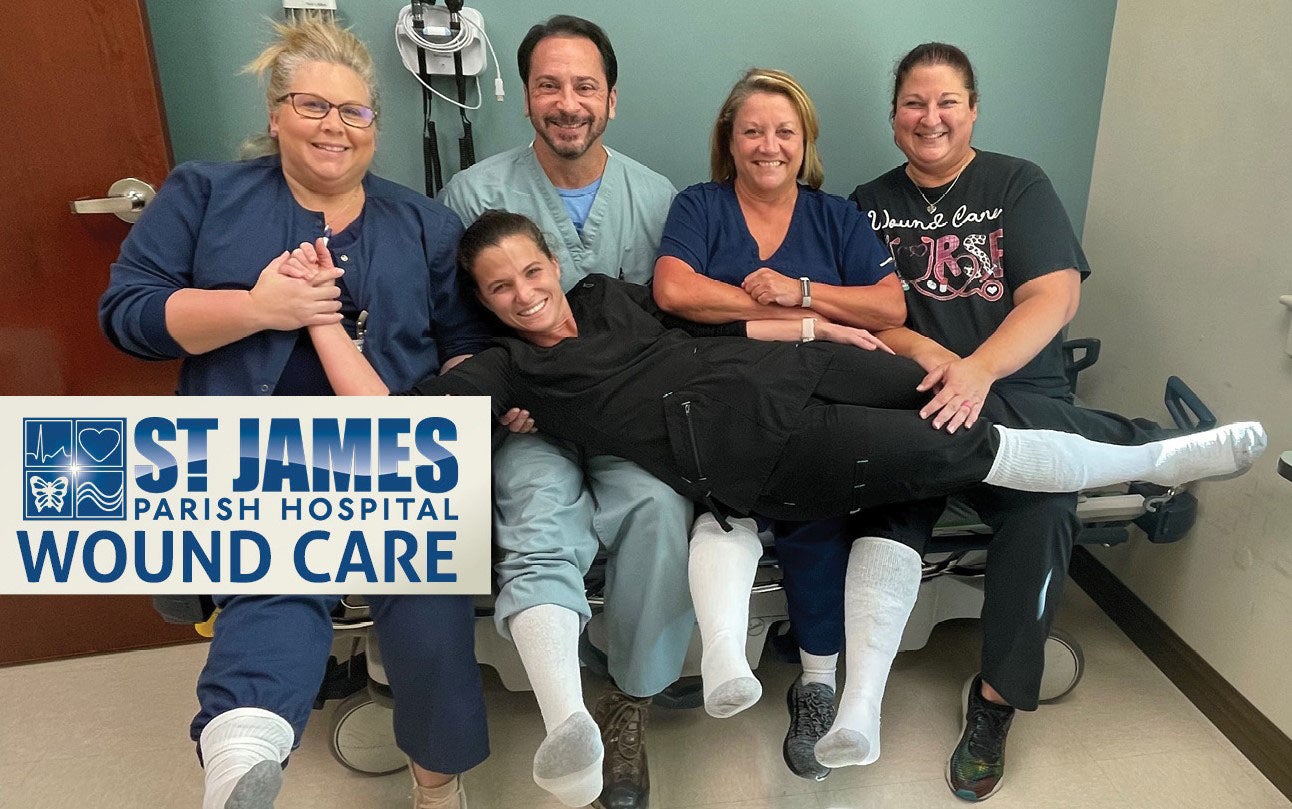September is PAD Awareness Month
Published 3:19 pm Saturday, September 24, 2022

- St. James Parish Hospital’s Wound Care Team is promoting PAD Awareness by wearing one white sock to symbolize to symbolize those who have received an amputation due to Peripheral Arterial Disease. Early intervention and quality wound care is essential to amputation prevention.
|
Getting your Trinity Audio player ready...
|
September is Peripheral Artery Disease (PAD) Awareness Month. PAD is a chronic circulatory condition, which if left untreated can result in unnecessary limb amputations. PAD affects nearly 20 million Americans and an estimated 200,000 of them – disproportionately from minority communities–suffer avoidable amputations every year. St. James Parish Hospital’s Wound Care Team is supporting PAD Awareness efforts by sharing tips from the American Heart Association and reinforcing the importance of ongoing foot checks and early wound care for patients with PAD.
About Peripheral Artery Disease
Peripheral artery disease is a narrowing of the peripheral arteries that carry blood away from the heart to other parts of the body. The most common type is lower-extremity PAD, in which blood flow is reduced to the legs and feet. PAD can be dangerous because these blockages can restrict circulation to your limbs and organs. Without adequate blood flow, your vital organs, arms, legs and feet can suffer damage. Left untreated, the tissue can become infected or die, a condition called gangrene, which can result in an amputation or even death.
What are the symptoms of PAD?
The most common symptom of lower-extremity peripheral artery disease is painful muscle cramping in the hips, thighs or calves when walking, climbing stairs or exercising. The pain of PAD often goes away when you stop exercising, although this may take a few minutes. Working muscles need more blood flow. Resting muscles can get by with less. If blood flow is blocked due to plaque buildup, the muscles won’t get enough blood during exercise to meet the needs. The cramping pain (called intermittent claudication) is the muscles’ way of warning the body that it isn’t receiving enough blood during exercise to meet the increased demand. A large percentage of people with PAD, though, have no symptoms or mistake their symptoms for something else.
Risk Factors for PAD
- Increasing age -Age 65+, Age 50-64 with risk factors for atherosclerosis, Less than 50 with Type 2 diabetes and at least one other risk factor for atherosclerosis)
- Personal or Family History
- Cigarette Smoking – Smokers may have almost three times the risk of PAD than nonsmokers. Use our guide to quitting smoking.
- Type 2 Diabetes – Having diabetes puts you at greater risk of developing PAD as well as other cardiovascular diseases. Learn more about the risks and how to manage diabetes.
- High Blood Pressure – It’s called “the silent killer” because it has no symptoms. Work with your health care professionals to monitor and control your blood pressure.
- High Cholesterol – High cholesterol contributes to the build-up of plaque in the arteries (atherosclerosis), which can significantly reduce the blood’s flow. Managing your cholesterol levelsis essential to prevent or treat PAD.
Tips to Reduce Your Risk
- Manage your diabetes, blood sugar and cholesterol levels.
- Stop smoking and maintain a healthy lifestyle, including eating healthy and exercising regularly.
- Reach and maintain a healthy weight.
- Make regular appointments with your health care professionals.
- Take off your socks at your next checkup and let your doctor examine your feet.
- If you are diabetic or have been diagnosed with PAD, do at-home foot checks often and seek professional wound care services at the first sign of a wound.
- Find support. If you don’t have access to health care, free resources and places in your community may be available.
For more information about Peripheral Arterial Disease, visit to heart.org/PAD. To schedule an appointment at St. James Parish Hospital’s Wound Care Center, call 1.877.295.2273.




